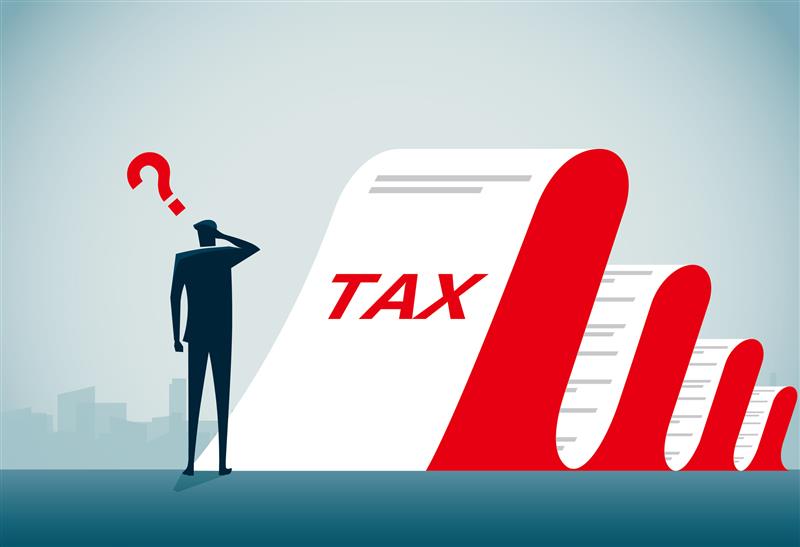Why Non-Residents Must File Form 10F to Claim DTAA Benefits
Created By :
Vikas Sharma
Don't Pay Double – Let the Treaty Work for You
With increasing interconnectivity and globalization, cross-border trade and business transactions have become the new norm. People and businesses are now generating income across multiple countries. Whether you are a solo freelancer abroad or a multinational corporation, generating revenue from India can unintentionally subject you to double taxation — first in India (the source country) and then in your own country (country of residence). As a result, non-resident (NR) taxpayers might find themselves taxed twice on the same income, potentially resulting in a major financial strain on them.

Claiming DTAA Benefits: The Importance of Documentation
To address this problem, India has entered into Double Taxation Avoidance Agreements (DTAAs) with several countries, enabling foreign organizations and NRs to seek relief and prevent double taxation on the same income through tax relief or exemptions. This framework is crucial for facilitating global business with India. By minimizing the tax impact on cross-border income, DTAAs encourage foreign investment and foster international collaboration.
Protect Your Income from Double Taxation Today! Contact us now
But here’s the catch: claiming DTAA benefits isn’t automatic. It requires specific documentation, including the often-overlooked Form 10F and a valid Tax Residency Certificate (TRC) issued by the taxpayer’s home country. As per Section 90 of the Income-tax Act, 1961 (“the Act”), these documents must be furnished to the Indian tax authorities to claim treaty relief.
Form 10F plays a critical role in ensuring that NR taxpayers are not unfairly taxed when dealing with Indian clients or earning income from Indian sources.
In this blog, we will find out what Form 10F is, why it’s needed, who must file it, consequences for non-filing and how AKM Global helps you in filing it accurately and efficiently to ensure seamless compliance and hassle-free claim of DTAA benefits.
What is Form 10F?
The Missing Link in Your DTAA Claim
Form 10F is a self-declaration filed by NRIs (individuals or entities) earning income in India, to avoid being taxed on the same income in both India and their country of residence. It supplements the TRC by providing additional details apart from the information stated in TRC such as the NR taxpayer’s address and applicable tax period. Thus, it bridges the gap between the information stated in TRC and information mandatorily required by tax authorities.
Understanding DTAAs:
DTAAs are bilateral agreements / tax treaties signed between two or more nations to assist taxpayers in preventing double taxation on the same earnings. Utilizing the DTAAs, individuals and companies can seek reduced tax rates or exemptions on income like dividends, interest, and royalties received in India – promoting tax efficiency and preventing double taxation.
Why is it Essential to File Form 10F?
Skip the Form, Miss the Benefit Contact us now
The importance of Form 10F lies in both financial and regulatory aspects and not filing it leads to serious implications:
-
Loss of treaty benefits: Without Form 10F, NR taxpayers are not eligible for claiming treaty benefits and may end up paying taxes at higher rates prescribed under the Act.
-
Cash flow issues: Without Form 10F, the Indian payer may deduct TDS at the standard/higher domestic rates, which can lead to unnecessary cash flow constraints, complicated refund claims, and potential scrutiny by Indian tax authorities.
-
Compliance risk: Claiming treaty benefits without submitting Form 10F may result in tax and penal consequences on the Indian resident payor in cases of shortfall or nil deduction of tax.
Who Should File Form 10F?
Form 10F is applicable to all taxpayers who are NRs, which includes:
-
Individuals: This includes foreign nationals employed in India, freelancers or consultants providing services remotely, or individuals receiving income from Indian entities.
-
Companies: International firms generating revenue from India, regardless of whether they have a permanent establishment in the country.
-
Other Entities: This can encompass any non-resident entities such as trusts, partnerships, or associations that derive income from India and aim for tax treaty advantages.
Form 10F might seem like a minor part of routine tax filings, but it holds considerable importance – particularly for NRs conducting business in India. Understanding its subtleties and benefits can aid you in avoiding double taxation, reduce your TDS responsibilities, and enable you to engage in business with Indian partners smoothly—whether you’re a foreign service provider, an international consultant, or an overseas vendor.
Don’t Let Double Taxation Eat into Your Profits
AKM Global provides expert guidance on DTAA eligibility and assists NRs with smooth and compliant filing of Form 10F, helping them secure DTAA benefits seamlessly. Still have questions about Form 10F or DTAA eligibility? Reach out to us at info@akmglobal.in.
FAQs
-
What happens if I don’t have Form 10F?
If NRIs fail to submit Form 10F and the Tax Residency Certificate (TRC), they may lose the DTAA benefits, and withholding could be at higher tax rates in India.
-
When should NRs file Form 10F?
There is no specific deadline for filing Form 10F; however, it must be filed annually - generally whenever there's a risk of double taxation and they intend to claim the benefits of tax treaty.
-
Can companies also file Form 10F?
Yes, Form 10F is mandatory for all non-residents including foreign companies earning income subject to income tax in India, and who intend to claim DTAA benefit on such income.
-
What is Tax Residency Certificate (TRC)?
The TRC serves as the official proof of residency for the Indian Income Tax Authorities. It is mandatory for the non-residents to obtain this certificate from their respective home countries.